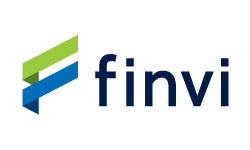Source: site

Capital One’s third quarter earnings results showed improving card performance, growth in purchase volumes on those cards, and synergies from the Discover acquisition that closed earlier in the year.
Company materials noted double-digit growth year over year, given the impact of the Discover business. But even stripping out Discover, organic trends remained intact.
During his remarks to analysts, CFO Andrew Young said that in the domestic card segment, the company released $53 million of allowances, as the combined company noted “credit favorability in both losses and recoveries as well as a slight improvement in the forecasted unemployment rate.” The domestic card coverage ratio now stands at 7.28%, down from previous quarters.
And in his own comments on the call, CEO Richard Fairbank said that “the Discover acquisition was the dominant driver of third quarter domestic card results, including the impacts of a full quarter of combined operations, a combined quarter end balance sheet, and purchase accounting effects. Looking through the Discover impact, the combined domestic card business delivered another quarter of top line growth, strong margins and improving credit.” Excluding the impact of the Discover acquisition, Fairbank said, card-related purchase volumes were up 6.5%, and card loans were up 3.5%.
“While competitive intensity remains high, we continue to see good traction across our legacy card business, including strong growth with heavy spenders at the top of the market,” he said.
“The legacy Discover card loans continued to contract slightly and will likely continue to face a growth headwind due to Discover’s prior credit policy cutbacks and some trimming around the edges that we will implement going forward.”
Advertisement: Scroll to Continue
Improving Credit Quality
The third quarter domestic card charge-off rate was 4.63%, down 62 basis points from the prior quarter and 98 basis points from a year ago.
“Our charge off rate has been improving on a seasonally adjusted basis throughout 2025,” said Fairbank.
Global payment network transaction volume for the quarter was about $153 billion, and auto originations were up 17% year over year.
“The auto charge-off rate for the quarter was 1.54%, down 51 basis points year over year. Largely as the result of our choice to tighten credit and pull back in 2022, and auto charge-offs are improving on a seasonally adjusted basis,” he said.
Shares were up 3% in after-market trading on Tuesday (Oct. 21).
With a nod to Discover, Fairbank said, “This network is a rare and valuable asset, but it is very subscale in a scale-driven business. We are already underway with our announced plan to move our debit volume and a portion of our credit card volume to the network. These moves are powering our revenue synergies. To fully capitalize on the strategic benefit of being one of the few payment networks, we aspire to move more of our volume onto the network.”
AI Ambitions
And in discussing the national brand, he said, “We have built what we believe is the Bank of the Future with full-service digital banking capabilities enhanced by thin physical distribution of showroom branches in iconic locations. We are the only major bank building a national bank organically, and we are enjoying a lot of traction. Having our own debit network accelerates this journey. But an organic growth model requires a lot of investment in marketing for many years, and those investments are growing.
“Since the beginning of our technology transformation, our journey has been focused on bringing AI [artificial intelligence] into the heart of the business,” he said. “Many companies will be bringing in third-party AI applications, which will help transform how work is done. But transforming the business model of banking with AI requires AI to be deeply embedded in the technology, operations, processes, risk management and customer experiences of the company.”
Asked on the call about the state of the consumer, Fairbank said, “Some consumers are feeling pressure from the accumulated effects of price inflation and higher interest rates, which have increased the cost of new borrowing in most asset classes. We’re watching closely as student loan repayments and collections resume. … I should note that our charge-offs have also been supported by strong recoveries.
“The front book of new originations continues to perform well, with 2024 originations tracking at or below pre-pandemic benchmarks for both legacy Capital One and Discover.”
Upcoming Events
Sign up for our newsletter
Sign up to get the latest news and updates about the industry, as well as announcements regarding upcoming conferences




